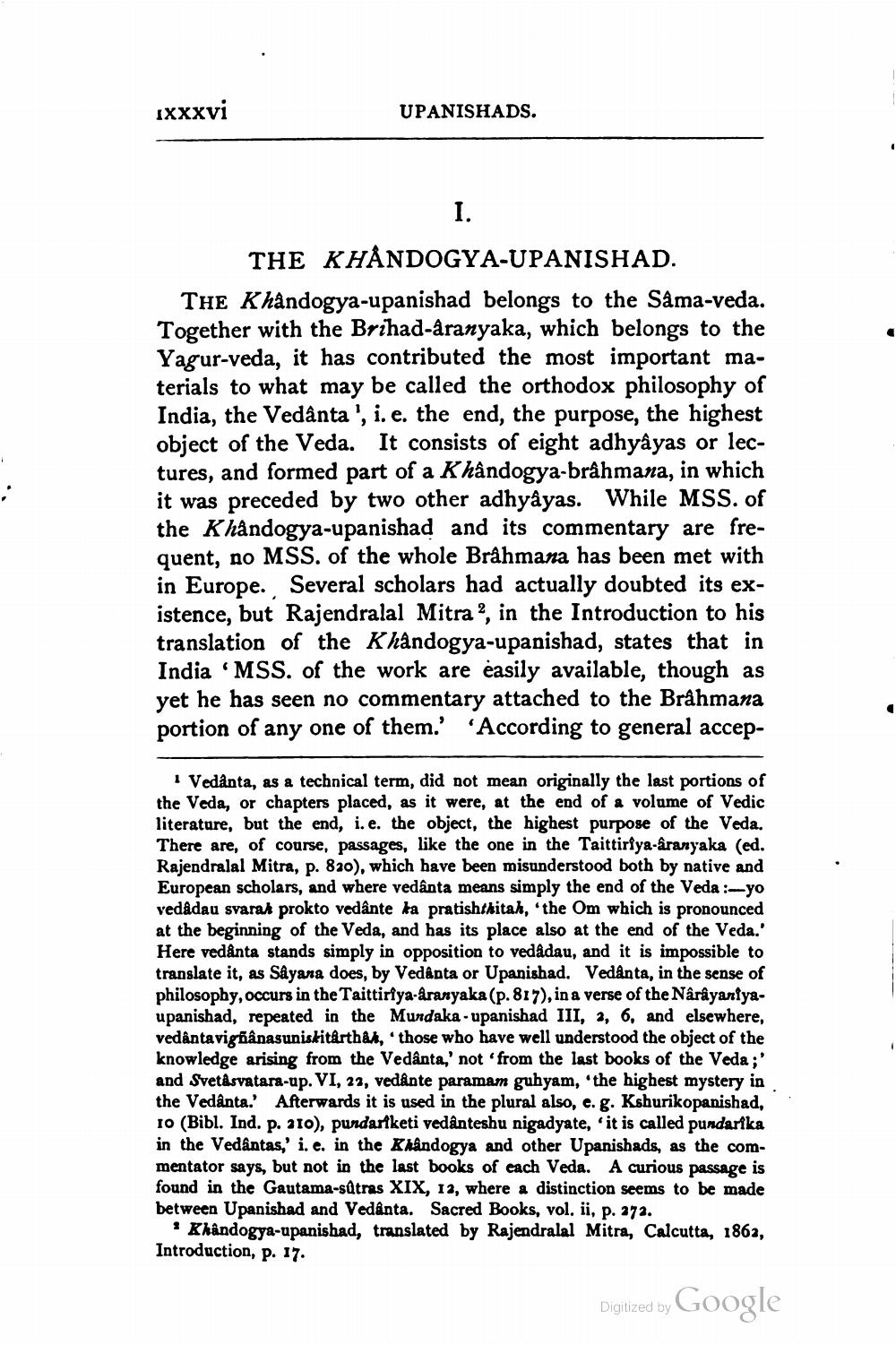________________
IXxxvi
UPANISHADS.
THE KHÅNDOGYA-UPANISHAD. THE Khandogya-upanishad belongs to the Sama-veda. Together with the Brihad-aranyaka, which belongs to the Yagur-veda, it has contributed the most important materials to what may be called the orthodox philosophy of India, the Vedanta', i.e. the end, the purpose, the highest object of the Veda. It consists of eight adhyâyas or lectures, and formed part of a Khandogya-brâhmana, in which it was preceded by two other adhyâyas. While MSS. of the Khåndogya-upanishad and its commentary are frequent, no MSS. of the whole Brahmana has been met with in Europe. Several scholars had actually doubted its existence, but Rajendralal Mitra?, in the Introduction to his translation of the Khandogya-upanishad, states that in India ‘MSS. of the work are easily available, though as yet he has seen no commentary attached to the Brahmana portion of any one of them.' 'According to general accep
1 Vedanta, as a technical term, did not mean originally the last portions of the Veda, or chapters placed, as it were, at the end of a volume of Vedic literature, but the end, i.e. the object, the highest purpose of the Veda. There are, of course, passages, like the one in the Taittiriya-aranyaka (ed. Rajendralal Mitra, p. 820), which have been misunderstood both by native and European scholars, and where vedânta means simply the end of the Veda :-yo vedadau svarak prokto vedante ka pratishthitah, 'the Om which is pronounced at the beginning of the Veda, and has its place also at the end of the Veda.' Here vedånta stands simply in opposition to vedadau, and it is impossible to translate it, as Sâyana does, by Vedanta or Upanishad. Vedanta, in the sense of philosophy, occurs in the Taittiriya-aranyaka (p. 817), in a verse of the Narayantyaupanishad, repeated in the Mundaka - upanishad III, 2, 6, and elsewhere, vedântavigñanasuniskitárthat, those who have well understood the object of the knowledge arising from the Vedanta,' not from the last books of the Veda ;' and Svetåsvatara-up. VI, 22, vedånte paramam guhyam, the highest mystery in the Vedânta.' Afterwards it is used in the plural also, e.g. Kshurikopanishad, 10 (Bibl. Ind. p. 3to), pundariketi vedanteshu nigadyate, it is called pundarika in the Vedantas,' i.e. in the Kaandogya and other Upanishads, as the commentator says, but not in the last books of each Veda. A curious passage is found in the Gautama-sätras XIX, 12, where a distinction seems to be made between Upanishad and Vedanta. Sacred Books, vol. ii, p. 272.
Khandogya-upanishad, translated by Rajendralal Mitra, Calcutta, 1862, Introduction, p. 17.
Vedanta," not have well unders: 6. and drayantya
Digitized by Google




